From nanoscience to app design, sports to politics, these young Canadians are breaking the mould. Read on for our special report on a group of 16 young people who are outstanding in their fields.
To see each individual’s profile, click their image in the grid below:
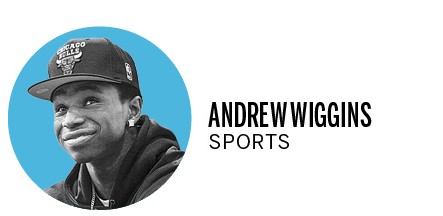 | 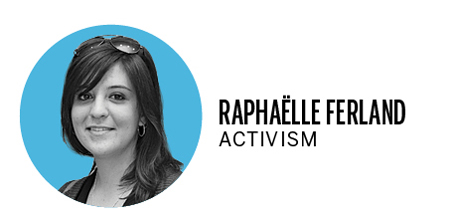 | 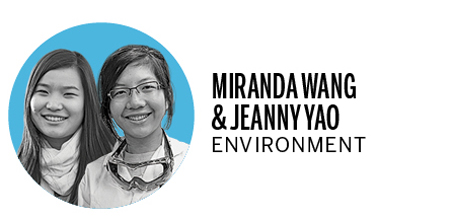 |
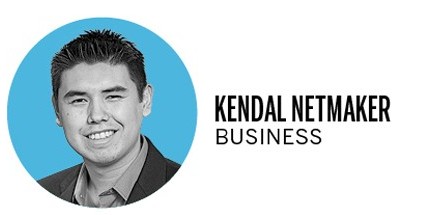 | 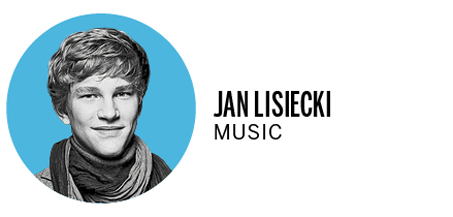 | 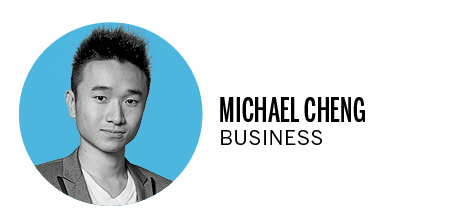 |
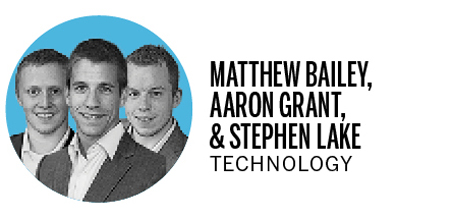 |  | 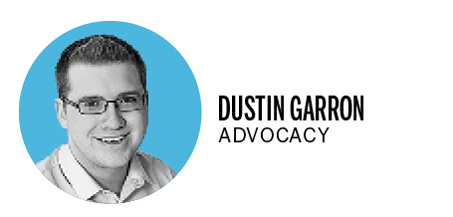 |
 |  | 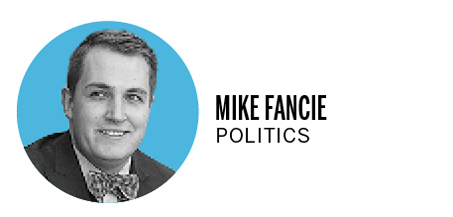 |
 |

The number 22 is no 99. But 18-year-old basketball phenomenon Andrew Wiggins may just be a sports legend in the making—on both sides of the border. The Toronto-born forward is the undisputed star of American high school hoops, wearing the number 22 for Huntington Prep in Huntington, W.Va. He won the 2013 Naismith High School Player of the Year award for most outstanding male player, the 2013 Gatorade Player of the Year award for athletic and academic achievement and is ranked by many as the top choice among college teams battling to recruit him.
The six-foot-eight, 215-lb. Wiggins hasn’t announced which jersey he’ll don come fall, but it will likely be just a year-long stopover en route to the NBA.
Wiggins has built a reputation for modesty over the last two years, despite his spectacular feats: he averaged 23.4 points, 11.2 rebounds, 2.6 blocks and 2.5 assists per game this past season. “I’m just a normal kid,” he told the Bleacher Report, noting a love of video games. But it’s not exactly true.
Wiggins was in Grade 7 when coach Roy Rana first saw him play at a gym in Toronto. The lanky teen’s natural talent was obvious. “He’s just got such a fluidity to his movements,” Rana says. “The great ones always make things look effortless, and that’s what he does.”
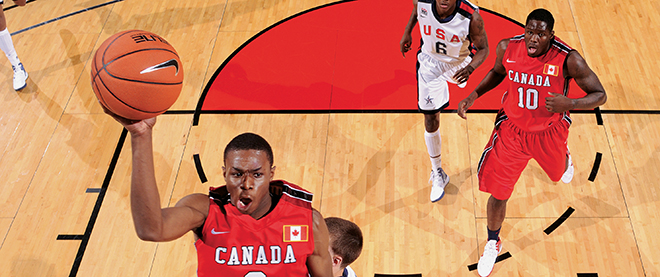
Rana has coached Wiggins on Canadian national teams and at other tournaments and will coach him again in late April for the Nike Hoop Summit, where the world’s top young ball players face off in a U.S. vs. the-rest-of-the-world match. At last year’s summit, Wiggins earned 20 points and led the world team to victory.
He has already been compared to many greats: LeBron James, for one, and even Michael Jordan and Steve Nash. And current superstars, for their part, have noticed.
“Andrew’s athleticism is very rare,” Nash told the Canadian Press. “He’s so explosive, his ability to move in any direction, to jump and to control his body while he jumps—with quickness, explosiveness and power.”
His game is “almost artistic,” says Rana. “There’s a beauty to the way that he plays.”
Wiggins and others have noted that good genes likely play a role. His father, Mitchell, played in the NBA, his mother is an Olympic-gold-medal track athlete, and his five siblings all play basketball. “They’re a very tight-knit family, very close,” Rana says. “Andrew values family to a great degree.” Wiggins’s Twitter feed features family Instagram photos. “Love my brothers,” he wrote in a recent tweet, and posted a composite shot of himself and his two older brothers—both on college teams—all three of them mid-slam-dunk.
Wiggins is not known for loving the media spotlight. “He’s still a very humble kid,” Rana says. And his greatness is far from proven. There have been questions about his work ethic and almost God-like status among media and fans, most notably in a critical piece in Sports Illustrated.
“Even the best have to prove themselves on a daily basis, so it’s no different for Andrew,” says Rana.
He is, no doubt, the one to watch.
—Rosemary Westwood
 When law student Raphaëlle Ferland goes to one of her speaking engagements, she’s often the only presenter without a Ph.D. She’s also the only one who has lived on the streets.
When law student Raphaëlle Ferland goes to one of her speaking engagements, she’s often the only presenter without a Ph.D. She’s also the only one who has lived on the streets.
Ferland, 23, had a nomadic childhood, attending 14 different schools before she “stopped counting.” By 16, she was homeless, making it all the more impressive that she graduated at the top of her class and was accepted into law school.
Fending for herself was no cakewalk. “Back then, I did everything I could not to remember and not to care and not to think about it.”
Born in Montreal, Ferland’s parents split up when she was still a baby. She and her brother went to live with their dad, who remarried and switched jobs often, uprooting the family to Winnipeg, Mississauga, Ont., and Gatineau, Que. Ferland describes constant fighting at home.
When things got difficult, Ferland’s father would ask her to leave the house; she would stay away for weeks at a time. She always earned good grades, but while living in Ottawa, she was suspended from school for smoking marijuana. Knowing her dad would kick her out, she packed up her things and left home for good. It was April 2005, the week of her sixteenth birthday.
That first night, she headed to McDonald’s, which was open 24 hours. After that, it was park benches, bridges and whatever nooks she could find. She got into drugs, trying “almost anything,” and entered an abusive relationship. Her school attendance slipped and, along with it, her marks.
Eventually, she landed an apartment through the Youth Services Bureau of Ottawa. She also joined a youth engagement program, organizing conferences and speaking out about poverty. It was a turning point. “I was able to deal with everything—my health issues, my drug use,” she says.
She graduated from high school in 2008 with an A-plus average and her social worker convinced her to apply for college, sourcing out funding for her applications. She was accepted into the social work program at La Cité collégiale in Ottawa and graduated with a 90 per cent average. From there, she applied to the University of Ottawa’s civil law program. She will be graduating this spring.
Ferland is in the midst of establishing a charity for the homeless. She hopes to work in international human rights or social justice.
To other teens who find themselves in her situation, she says, “The light at the end of the tunnel—it’s there. You’ve just got to strive to get to it.”
—Manisha Krishnan
 For Miranda Wang and Jeanny Yao, a Grade 11 trip to a Vancouver landfill really made an impact— so much so that it sparked their groundbreaking discovery of plastic-eating bacteria.
For Miranda Wang and Jeanny Yao, a Grade 11 trip to a Vancouver landfill really made an impact— so much so that it sparked their groundbreaking discovery of plastic-eating bacteria.
“Plastic takes up such a huge proportion of the waste,” says Wang. “It’s a really big problem because, unlike metals, which can be so easily sorted from the waste, plastics are just broken into smaller pieces. They never actually disappear.”
After the landfill visit, the two high school seniors entered the 2012 Sanofi BioGENEius Challenge. Working with a microbiology professor at the University of British Columbia, they collected 14 strains of soil bacteria from contaminated sites along the Fraser River. Then they identified three strains that could efficiently degrade phthalates, a ubiquitous plasticizer, found in everything from pharmaceutical pills to children’s toys. Phthalates, which escape into the environment easily, have been linked to birth defects, asthma and cancer.
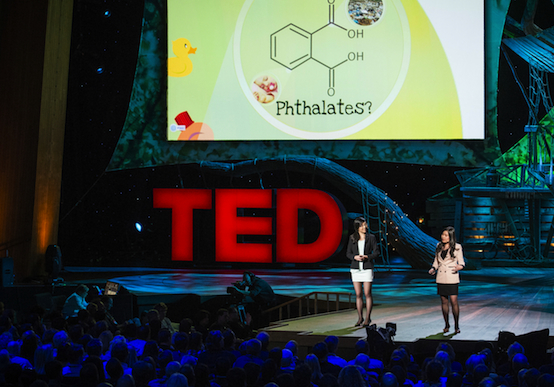
Two of the bacteria discovered by the girls had not previously been associated with plastic degradation. “If there’s a way for us to combine the strength of different bacteria in a model organism, we can treat a lot of contamination,” says Wang.
In February, the young scientists were selected to speak at the TED 2013 conference in Long Beach, Calif., alongside other innovators, including U2 front man, Bono.
Wang, 19, and Yao, 18, are enrolled in science programs at McGill University and the University of Toronto, respectively. They hope to patent their research at some point during their undergraduate years.
—Manisha Krishnan

Kendal Netmaker is not a professional sports star, but sports gave him the opportunity to shine. As a child, he played soccer with his friends, but financial barriers stopped him from joining school teams. With help from those who believed in him, Netmaker went on to earn an athletic scholarship for college and to attend university. Now 25, he is running a successful athletic clothing business and giving the gift of sports to underprivileged teens across Canada, hoping it will inspire them as it did him.
“I would definitely not be where I am without sports,” says Netmaker over the phone from Saskatoon, 140 km southeast of where he grew up on the Sweetgrass First Nation reserve. Raised by a single mother with his three sisters, he was one of the few Aboriginal children at his elementary school in the town of Cutknife. In Grade 5, when his friend’s family found out Netmaker couldn’t afford the fees to play soccer on the school team, they paid his membership and gave him rides to and from games. In Grade 9, the six-foot teen excelled at volleyball, and was eventually offered a scholarship to play for Keyano College in Fort McMurray, Alta., where he took some university courses. In 2007, he enrolled in the faculty of education at the University of Saskatchewan.
Around the time he was finishing up his degree, Netmaker had a brainstorm. He wanted to create an athletic clothing company that would help kids get involved in sports. He came up with Neechie Gear—“neechie” is slang for “my friend” in Cree—and entered a couple of local business competitions, taking home $16,000 in prize money to start his company. He won Saskatoon’s Finest Entrepreneur 2012 contest, hosted by the city’s Centre Mall, and was given a kiosk from which to sell his clothing. Neechie Gear became so popular, the shopping centre offered Netmaker his own shop last July.
Profits from clothing sales support the Neechie Gear Athletics Club, which so far has set up 10 different basketball, volleyball and hockey teams in Saskatchewan, Alberta and B.C. “It’s building confidence, it’s team-building, it’s setting [youths] up for their future,” says Netmaker, whose company has also established several post-secondary bursaries.
—Manisha Krishnan
 On March 23, Jan Lisiecki celebrated his 18th birthday by playing Chopin with the Victoria Symphony, a typical engagement in a whirlwind schedule that sees the internationally renowned pianist travel weekly, taking the stage an average of 100 times a year in cities such as Berlin, Toronto and Tokyo.
On March 23, Jan Lisiecki celebrated his 18th birthday by playing Chopin with the Victoria Symphony, a typical engagement in a whirlwind schedule that sees the internationally renowned pianist travel weekly, taking the stage an average of 100 times a year in cities such as Berlin, Toronto and Tokyo.
That day, a tongue-in-cheek Lisiecki quoted Einstein on Twitter: “Common sense is the collection of prejudices acquired by age 18.” But the Calgary-born teenager has acquired so much more than that—namely, a reputation as the most talented pianist of his generation.
His Polish parents never set out to create a prodigy when they placed him in weekly piano lessons at the age of 5. “It just grew on me. I don’t remember what my thoughts were, but I must have loved it, because I was always one of those people who didn’t do something if they didn’t enjoy it.”

In the spotlight since he took the stage at Carnegie Hall at 13, deemed “an extraordinary talent” and praised for a light touch on the keys, Lisiecki plays down the accolades. “It’s been very organic,” he says of a career he calls a “great adventure.” He describes a gradual advance from small halls in European cities to more grand ones, and more chances to play with established stars.
In mid-March, for example, he stepped in at the last minute for the Argentine pianist Martha Argerich to play Beethoven’s Piano Concerto No. 4 in Bologna, Italy, under the direction of the lauded conductor Claudio Abbado. “He’s one of the greatest conductors in the world, by any means, by any determination,” Lisiecki says. “Of course, it’s an honour to play with him.”
Lisiecki released his first album last year and a Chopin album will come out this month, both on the Deutsche Grammophon label. Among upcoming tour highlights is a spot at the prestigious BBC Proms music festival in London. For Lisiecki, playing the piano is akin to being a painter. “In music, you have millions of colours. I can play in hundreds of different ways, and every time will actually be different.”
Now studying music at the University of Toronto, Lisiecki is keen to avoid being defined solely by the instrument he loves. He’s an aggressive skier and loves studying English at school. “I think if I wasn’t a musician, I could easily be somebody else.”
Judging from the praise, that would be a loss to music lovers in Canada, and around the world.
—Rosemary Westwood
 Razor-sharp and pointed forward, Michael Cheng’s spiky new haircut is a perfect metaphor for the entrepreneur in perpetual motion. With 11 start-ups under his belt, the 23-year-old from Surrey, B.C., hasn’t even graduated from Simon Fraser University yet, though he has the requisite credits. He just hasn’t had time to attend convocation.
Razor-sharp and pointed forward, Michael Cheng’s spiky new haircut is a perfect metaphor for the entrepreneur in perpetual motion. With 11 start-ups under his belt, the 23-year-old from Surrey, B.C., hasn’t even graduated from Simon Fraser University yet, though he has the requisite credits. He just hasn’t had time to attend convocation.
Cheng arrived in B.C. at age 7 from Hong Kong. His parents, he says, “sacrificed everything—career, language, family”—so he could avoid China’s “rigid, robotic” learning. The move to B.C. pushed his parents into poverty. By 14, Cheng, an only child, was working three jobs to help support his family: ripping tickets at a suburban Silver City cinema, selling knives and working weekends at a farmers’ market. He was interviewing for a fourth job when he suddenly realized he was condemning himself to a “cycle of poverty.” He’d never get ahead on minimum wage, even if he put in 16-hour days.
So he taught himself web and graphic design, and at 17, launched his first start-up, By Plus Creative, designing websites and producing 3D animation. Two years later, when the humble teen graduated high school and arrived at SFU, his software skills blew his profs away. That first year, he was offered a lecturer’s position, teaching digital design.
Cheng, the youngest program coordinator in the school’s history, continues to rack up recognition and awards. Last year, he beat out Ph.D.s and M.B.A.s to win Surrey’s student entrepreneur of the year award, nabbed a contract to launch TED x SFU—hosting the famed Technology Entertainment and Design talks on campus—and launched yet another successful start-up, Witty Cookie, creating websites for small businesses for a $19 monthly fee. This summer, he’ll be in Toronto with The Next 36, the country’s most prestigious program for young entrepreneurs.
Cheng, whose long, thin fingers dance across the keyboard in a rhythmic flurry, still shares a 400-sq.-foot, one-bedroom apartment with his parents. The fight to make it in Canada, he says, “really brought us together.” He can’t imagine leaving them. And although his multiple business ventures have already brought the family a small fortune, he “can’t tell them to retire,” not just yet. He’s still taking too many risks, pouring money into new projects. But clearly, they are Cheng’s motivation. “The people I care about most are still struggling,” he says. “That’s what gets me up every day.”
—Nancy MacDonald
 The armband bestows superhero-like powers on its wearer, and it has thrust three University of Waterloo graduates into the Silicon Valley spotlight. Aaron Grant, 23, Matthew Bailey, 24, and Stephen Lake, 23, are the creators of MYO, a new way to control digital devices, including smartphones and computers, without touching them.
The armband bestows superhero-like powers on its wearer, and it has thrust three University of Waterloo graduates into the Silicon Valley spotlight. Aaron Grant, 23, Matthew Bailey, 24, and Stephen Lake, 23, are the creators of MYO, a new way to control digital devices, including smartphones and computers, without touching them.
In a promotional video, a hip, hoodie-wearing youth looking like a spawn of X-Men controls a toy helicopter simply by moving his arm. Unlike many other so-called gesture-control devices, MYO doesn’t use a camera to sense movement. Instead, it uses electrical sensors embedded in an armband. That innovation has propelled the three inventors and their company, Thalmic Labs, into the cutting-edge world of wearable computing—where the other big name in the business is Google.
After a recent demo of various start-ups in Silicon Valley attended by journalists, entrepreneurs and investors, Lake was still buzzing from the rave reviews. “We were selected by most media as the most promising company in the batch,” he says on the phone from Mountain View, Calif. “We’re also the only Canadian company.”
Thalmic Labs started after the three friends graduated from their engineering program last spring and decided to attack an old problem in a new way: “How do you communicate with a computer or digital device?”
There’s been the keyboard, the mouse, the touchscreen and now, there’s MYO. The armband works by sensing the electrical signals that your brain sends to your muscles. The inventors spent months figuring out how to match those unique signals with the physical movement of pointing a finger or rotating a wrist. The armband uses Bluetooth to connect wirelessly to a computer. But in the same way that app developers have defined the use of a smartphone, MYO’s real potential will only be seen if and when software developers buy into the idea, and build new applications for it.
Some consumers around the world are already convinced. Just four weeks after launching MYO, Thalmic Labs received 25,000 orders, worth $3.8 million (they cost $149 each), to be shipped by year end. Only 48 per cent of orders came from Canada and the U.S., the rest were from 125 other countries by gamers looking for a new way to play and corporate types using the MYO for presentations.
“We’re going all the way with this one. We’ll probably end up doing an IPO some day,” says Lake. “The big question is: what comes after [smartphones and tablets]? Our thesis is that it’s going to be something a lot more closely connected to us as humans.” Or, perhaps, superhumans.
—Rosemary Westwood
 For Janelle Tam, science is an exercise in basic problem solving. When the teenager from Waterloo, Ont., was searching for the perfect experiment to enter into the 2012 Sanofi BioGENEius Challenge—an advanced national biotechnology-research competition held annually for high school students—the then-16-year-old looked around, and decided that her scientific contribution would have something to do with trees.
For Janelle Tam, science is an exercise in basic problem solving. When the teenager from Waterloo, Ont., was searching for the perfect experiment to enter into the 2012 Sanofi BioGENEius Challenge—an advanced national biotechnology-research competition held annually for high school students—the then-16-year-old looked around, and decided that her scientific contribution would have something to do with trees.
“Canada has a lot of trees,” Tam says, “but our pulp and paper industry has been in decline, so I thought finding alternative uses for trees could be important.” It was a simple observation, but it helped her find a focus for the gruelling six-month experiment, which led to a groundbreaking scientific discovery.
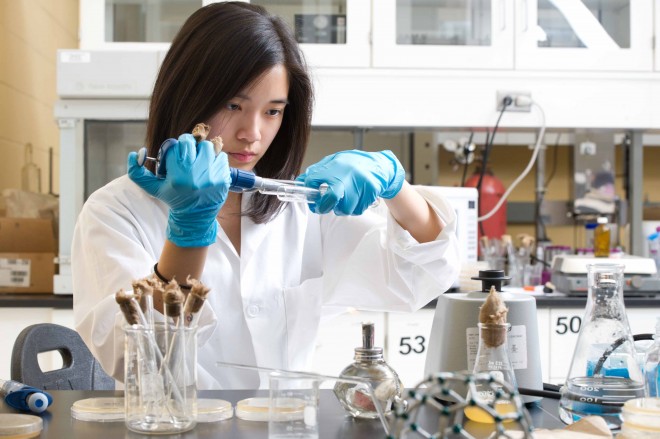
Tam knew that trees contain microscopic particles call nanocrystalline cellulose, or NCC, the chemical that keeps trees growing straight and strong. Since the particle was discovered by scientists 30 years ago, it has largely been used by manufacturers to increase the stiffness and strength of plastic, but Tam was interested in finding an alternative use that might invigorate Canada’s forestry industry. Using what she already knew about the molecular structure of antioxidants, Tam found a way to fuse NNC with buckminsterfullerene (soccer-ball-shaped molecules with a carbon atom at the centre) to create a new, anti-aging property that fights free radicals. Tam’s discovery will almost certainly be picked up by the cosmetic anti-aging industry, and could potentially be used to fight cancer and degenerative illnesses such as Alzheimer’s, all of which are linked to free radicals. After presenting her findings to a panel of Canada’s top scientists, Tam was awarded the top prize at the competition, and will be patenting her discovery.
“Nanotechnology has always interested me. It’s a new frontier of science and there is so much to be discovered,” she says. Now in Grade 12, she has been granted early acceptance into Princeton University and plans to be a doctor, medical researcher and advocate for science. “The most important thing is how science impacts our society,” she says. “That’s what inspires me.”
—Mika Rekai
 Dustin Garron, 18, holds little back when describing his history with suicide. He tried to kill himself seven times, four through overdosing. It was the seventh, on June 28, 2011, that nearly did kill him.
Dustin Garron, 18, holds little back when describing his history with suicide. He tried to kill himself seven times, four through overdosing. It was the seventh, on June 28, 2011, that nearly did kill him.
“I overdosed really bad,” he says matter-of-factly. “I was on life support.” It was his third hospitalization, and by far the worst. But over the next 10 days, something changed.
“My doctor I’d seen in two previous admissions was my attending doctor again,” he remembers. “She said, ‘You have to take your skills and use them in a positive way.’ She also said, ‘You’re really good at public speaking and working with young people.’ Little does she know I took her idea and kind of ran with it.”
Garron was released on July 6. Three days later, he founded the Mental Health Project for Youth. The organization educates Ontario’s 12- to 21-year-olds about mental illness and the resources available to help. It started with an idea for a phone help line and morphed into a public speaking group. Garron was 16 at the time, but already had a history of advocacy as a student trustee for the Renfrew County Catholic District School Board.
Growing up in Renfrew, Ont., Garron felt ostracized because he was gay. He was bullied in elementary school. Anxiety grew as he got older, but it wasn’t until tensions between his parents, financial stress and problems with a relationship combined to overwhelm him that he first attempted suicide and, as a result, was diagnosed with anxiety disorder and features of borderline personality disorder.
Now studying gender studies at Carleton University in Ottawa, with plans for a master’s in management of not-for-profit organizations, Garron says public speaking gives him hope that he can save others from the choices he made. “I speak off the top of my head. I speak from the heart,” he says. His audience can relate to stories of family fights or troubled love. He dreams of transforming the Mental Health Project for Youth, already a success, into an instantly recognizable and trusted name, one that would maybe have helped his friend Robert Dean, who committed suicide in August 2011—one month after Garron launched his new project.
“How I coped by overdosing is not the right way to cope,” Garron says. And he is living proof.
—Rosemary Westwood
 Gord Parke is launching an iPhone app that’s caught the golfing world’s attention—and, he hopes, will revolutionize the way golfers fix their swings. He’s 25 years old, and it’s all happening because the Winnipeg-born Parke chased a dream.
Gord Parke is launching an iPhone app that’s caught the golfing world’s attention—and, he hopes, will revolutionize the way golfers fix their swings. He’s 25 years old, and it’s all happening because the Winnipeg-born Parke chased a dream.
Parke created the app, SkyPro, with fellow developers Adam Tsouras and Eytan Moudahi. It will retail for $199, and involves a hardware component and a software component—a relative rarity in the world of iPhone apps, says Parke—that combine to provide golfers with a video of their swing that they can play back, study and use to improve their game. Parke and Tsouras found a willing partner in SkyGolf, a Mississippi-based company with resources that would help them get their product to market. They moved south and got to work.
Golf Digest spotted the app at a recent trade show and called it one of “the coolest, wackiest and most innovative items” on offer. Parke says he’s exactly where he wants to be. “I always wanted to invent new things and be a little entrepreneurial,” he says. “It was never really a question what I wanted to do.”
Parke’s success comes as no surprise to Josanne Mann, the commodore of the Zig Zag Yacht Club on Lake of the Woods in northwestern Ontario. Before he left for the University of Toronto, where he studied engineering science, Parke spent his summers sailing at the club. He competed on behalf of Manitoba, and taught the craft to kids, as well.
Mann, who’s known Parke for more than 15 years, describes him as “humble,” someone who “would never brag” about his accomplishments. But more than that, Mann says he learned how to cope with stressful situations. She recalls one competition in San Francisco where the water was rough, but Parke and his teammates were undaunted. “They trusted each other so much that they had no fear,” says Mann.
Parke says sailing forced him to learn how to be responsible. “It sounds kind of funny, but you’re 15 and you have a boat to take care of,” he says. “You develop some leadership skills.”
Once he and Tsouras wrap up their work with SkyPro, Parke says he plans to return to Winnipeg. Beyond that, he has no clear picture of the future: “I’m not sure what’s next.” Maybe the sailing world could use an app of its own.
—Nick Taylor-Vaisey
 Sarthak Sinha was in the sixth grade when, he says, it dawned on him that he was “living in very exciting times.” He couldn’t wait for his age to catch up with his intellect. He read a lot of books. He found himself fascinated by regenerative medicine—uncommon reading material for a middle-school student.
Sarthak Sinha was in the sixth grade when, he says, it dawned on him that he was “living in very exciting times.” He couldn’t wait for his age to catch up with his intellect. He read a lot of books. He found himself fascinated by regenerative medicine—uncommon reading material for a middle-school student.
Born in rural India but settled in Calgary, Sinha was desperate to get into a lab. In the ninth grade, he submitted a proposal to a competition that awarded the winner a six-month mentorship with a researcher at the University of Calgary. Sinha’s youth rendered him ineligible, but he refused to accept rejection. He went knocking on lab doors, hoping a researcher would give him an opportunity. Jeff Biernaskie, a professor in the university’s department of comparative biology and experimental medicine, eventually offered Sinha a spot in his lab.
With his foot in the door, Sinha flourished. He’s collaborated with Biernaskie on stem-cell research presented to conferences across North America. He’s worked with the Hotchkiss Brain Institute in Calgary. He’s conducted research at the University of Pennsylvania. He’s won the silver medal at the Canada Wide Science Fair, and placed third at an international science fair.
Sinha is proud of his accolades. “It’s very empowering,” he says. When he walks into a lab, he can “do things no one else has ever done. And it will all contribute to the progression of mankind.” Heady words for a teenager. Sinha aspires to be both a clinician and a researcher, jobs he knows he’ll love.
When Sinha’s not at high school—where he’s frustrated by English and history, just like any other student—or in the university lab, he serves as an ambassador with the Multiple Sclerosis Society of Canada. He spends time every week with an MS patient. “She has no family, so it means a lot to her to see someone,” he says of the patient. “And it means a lot to me, because I can make an impact on someone’s life.”
—Nick Taylor-Vaisey
 In his second year at the University of Ottawa, Mike Fancie was a student activist—concerned with the Ontario government’s decision to end a tuition-fee freeze—without a political party. But then the campus New Democrats needed someone who spoke French for an upcoming debate. “I said, ‘Well, I’m not doing it because I’m a New Democrat, I’m doing it because I like to debate people,’ ” recalls Fancie, now 25, and originally from Montreal. As it turned out, he says, he was more of a “dipper” than he thought.
In his second year at the University of Ottawa, Mike Fancie was a student activist—concerned with the Ontario government’s decision to end a tuition-fee freeze—without a political party. But then the campus New Democrats needed someone who spoke French for an upcoming debate. “I said, ‘Well, I’m not doing it because I’m a New Democrat, I’m doing it because I like to debate people,’ ” recalls Fancie, now 25, and originally from Montreal. As it turned out, he says, he was more of a “dipper” than he thought.
Through an acquaintance who worked for Olivia Chow, he ended up volunteering in the NDP MP’s Ottawa office. When the Harper government fell in 2011, he did advance work for Jack Layton’s national election tour. And when that campaign resulted in 103 NDP MPs, Fancie became an assistant to Pierre-Luc Dusseault, who, at 19, was the youngest person ever elected to the House of Commons. “I really like the opportunity to play a more supportive role,” Fancie says. “Maybe it’s just because I haven’t completely thought out where I want to be in five or six years, but I think being part of the wider progressive movement right now means supporting and helping. The nitty-gritty details of campaigning are things that I’m really passionate about and, as a candidate, you just don’t get to do that.”
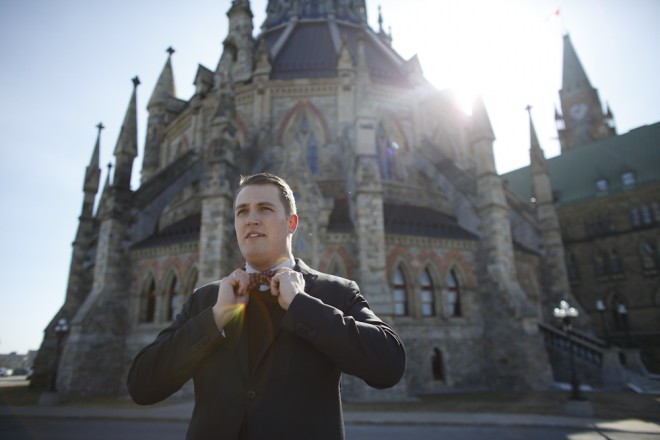
Fancie, who graduated with a degree in international studies, went on to work as a social media coordinator for Thomas Mulcair’s successful leadership campaign and is now communications coordinator for the Broadbent Institute in Ottawa—former NDP leader Ed Broadbent’s attempt to build a centre for social democratic thought and advocacy. “I think we are at a bit of a fork in the road in the way that we think about our government and the way we think about society,” he says. “So I think that being involved in the process is an important experience at this point in time.”
—Aaron Wherry
 Middle-school science experiments typically revolve around volcanoes erupting by mixing baking soda and vinegar, but 13-year-old Dheevesh Arulmani was far more interested in the future of renewable energy. Passionate about science, technology and the environment, he wanted to develop a project on fuel cells—cells that produce electric energy from the chemical reactions of fuels, such as hydrogen or methanol. At 13, he created his bio-inspired photonic fuel cell, through which photosensitizers use solar power to increase the rate of electricity production.
Middle-school science experiments typically revolve around volcanoes erupting by mixing baking soda and vinegar, but 13-year-old Dheevesh Arulmani was far more interested in the future of renewable energy. Passionate about science, technology and the environment, he wanted to develop a project on fuel cells—cells that produce electric energy from the chemical reactions of fuels, such as hydrogen or methanol. At 13, he created his bio-inspired photonic fuel cell, through which photosensitizers use solar power to increase the rate of electricity production.
Photosensitizers can enhance the power output of fuel cells by 60 to 90 per cent. It’s a breakthrough that has a lot of potential in the real world,” says Arulmani, now 17. “In the future, these fuel cells have applications for everything from cellphones to laptops to automobiles to industrial applications.”
Arulmani is one of 20 young Canadians repeatedly invited to attend the Intel International Science and Engineering Fair. In 2010, then a Grade 9 student, he won second place at the fair and picked up Google’s first-place award in the “future of energy” category.
He has spent the last few years working in the electrochemistry lab at the University of Ontario Institute of Technology in Oshawa, Ont. While being the youngest person there was intimidating at first, he says the steep learning curve has been well worth it. “It’s been an incredible opportunity to develop my research and develop my knowledge.”
Now Arulmani is trying to decide between Harvard University and the Massachusetts Institute of Technology, both of which accepted him for September admittance. He hopes to further his fuel-cell research and believes it could one day be revolutionary. “In the next 10 or 15 years, this could certainly be the next power source that replaces fossil fuels.”
—Manisha Krishnan